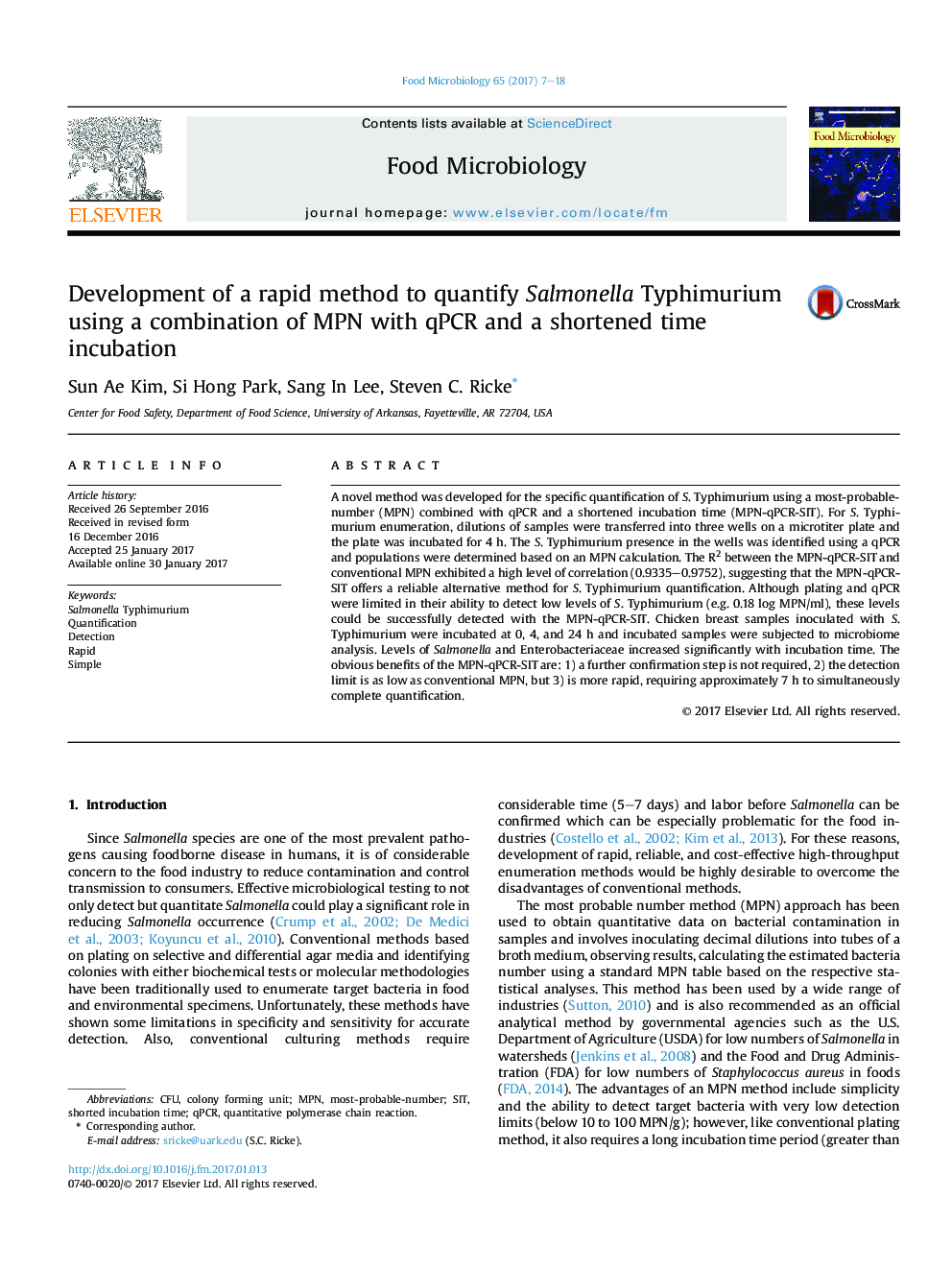| Article ID | Journal | Published Year | Pages | File Type |
|---|---|---|---|---|
| 5740123 | Food Microbiology | 2017 | 12 Pages |
â¢It is essential to develop more rapid and reliable quantification methods for Salmonella.â¢We have developed a new quantification method for S. Typhimurium.â¢The developed method demonstrated high accuracy and selectivity with a lower detection limit than the previous methods.â¢This current method can be utilized to quantify S. Typhimurium by significantly reducing both time and labor.â¢It may be particularly useful for the food industry and related applications where quantification is important.
A novel method was developed for the specific quantification of S. Typhimurium using a most-probable-number (MPN) combined with qPCR and a shortened incubation time (MPN-qPCR-SIT). For S. Typhimurium enumeration, dilutions of samples were transferred into three wells on a microtiter plate and the plate was incubated for 4 h. The S. Typhimurium presence in the wells was identified using a qPCR and populations were determined based on an MPN calculation. The R2 between the MPN-qPCR-SIT and conventional MPN exhibited a high level of correlation (0.9335-0.9752), suggesting that the MPN-qPCR-SIT offers a reliable alternative method for S. Typhimurium quantification. Although plating and qPCR were limited in their ability to detect low levels of S. Typhimurium (e.g. 0.18 log MPN/ml), these levels could be successfully detected with the MPN-qPCR-SIT. Chicken breast samples inoculated with S. Typhimurium were incubated at 0, 4, and 24 h and incubated samples were subjected to microbiome analysis. Levels of Salmonella and Enterobacteriaceae increased significantly with incubation time. The obvious benefits of the MPN-qPCR-SIT are: 1) a further confirmation step is not required, 2) the detection limit is as low as conventional MPN, but 3) is more rapid, requiring approximately 7 h to simultaneously complete quantification.
